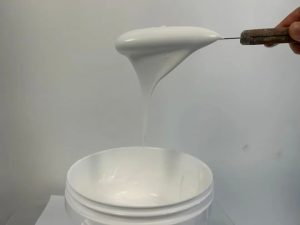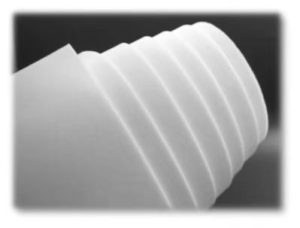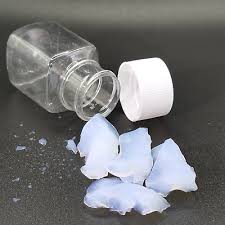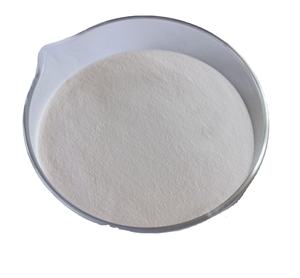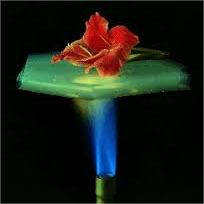Professional industry ceramic supplier, silicon nitride, silicon carbide, aluminum nitride and any other kinds of ceramics.
1. Introduction
In a major development just 24 hours ago, a leading U.S.-based advanced ceramics manufacturer announced a breakthrough in mass-producing high-purity silicon carbide crucibles with enhanced thermal shock resistance—addressing long-standing challenges in metal casting and semiconductor processing. This innovation underscores the growing reliance on silicon carbide (SiC) in extreme environments where performance and durability are non-negotiable.

Silicon carbide crucibles have become indispensable in industries ranging from metallurgy to laboratory research due to their exceptional ability to withstand temperatures exceeding 1,600°C while resisting chemical corrosion and thermal degradation. But what exactly sets them apart from other ceramic materials? And how do they fit into the broader landscape of advanced ceramics like silicon nitride or boron carbide?
2. What Is a Silicon Carbide Crucible?
A silicon carbide crucible is a container made from silicon carbide—a compound of silicon and carbon—engineered to hold molten metals, glass, or other high-temperature substances without deforming or reacting chemically. Unlike traditional clay or graphite crucibles, SiC versions offer superior thermal conductivity, mechanical strength, and oxidation resistance.
These crucibles are typically manufactured through processes like reaction bonding (RBSiC) or sintering, resulting in dense, robust structures ideal for repeated heating and cooling cycles. Their use spans foundries, jewelry making, aerospace component production, and even university labs.
3. Key Properties and Advantages
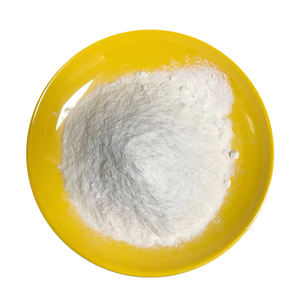
- Extremely high thermal conductivity: Allows rapid, even heating.
- Excellent thermal shock resistance: Can endure sudden temperature changes without cracking.
- High hardness and wear resistance: Outperforms many metals and oxides in abrasive conditions.
- Chemical inertness: Resists attack from acids, alkalis, and molten salts.
- Long service life: Reduces downtime and replacement costs in industrial settings.
4. Silicon Carbide vs. Other Advanced Ceramics
When comparing silicon carbide to alternatives, distinctions become clear. For instance, boron carbide vs silicon carbide reveals that while boron carbide (B4C) is harder and used in armor applications, it’s more brittle and expensive—making SiC more practical for crucibles and structural parts.
Meanwhile, silicon nitride (Si3N4)—another high-performance ceramic—excels in toughness and fatigue resistance. Products like silicon nitride crucible factory outputs, silicon nitride rings, and custom silicon nitride heat shields are favored in turbine engines and cutting tools. However, silicon nitride generally has lower thermal conductivity than SiC, limiting its use in applications requiring rapid heat transfer.
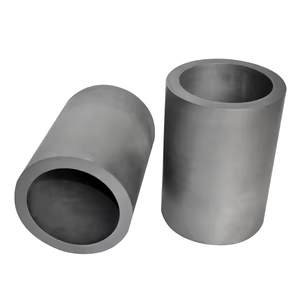
Zirconia crucibles and alumina (Al2O3) ceramics also serve high-temp roles but often fall short in thermal shock scenarios where silicon carbide thrives.
5. Beyond Crucibles: The Versatile World of Silicon Carbide Ceramics
The utility of silicon carbide extends far beyond crucibles. Today, manufacturers produce an astonishing array of SiC-based items:
- Industrial components: rbsic silicon carbide tile blocks, silicon carbide ceramic columns, silicon carbide burner nozzles, and silicon carbide bricks line furnaces and kilns.
- Tubing and piping: silicon carbide ceramic tubes, including porous variants and thermocouple protection tubes, handle corrosive gases and molten flows in harsh environments.
- Discs and seals: silicon carbide discs power everything from ceramic disc taps to grinding and sanding tools, including diamond-coated variants for pottery finishing.
Surprisingly, silicon carbide has even entered the consumer kitchen space. Brands now offer silicon carbide ceramic baking dishes, casserole dishes with lids, butter dishes, dinner plates, salad bowls, and oven-safe bakeware—marketed for their durability, non-reactivity, and elegant matte-black or white finishes. Items like silicon carbide ceramic Christmas plates and handcrafted pasta bowls blend function with aesthetics.
6. Manufacturing and Market Trends
Advanced ceramics manufacturing continues to evolve, with RBSiC (reaction-bonded silicon carbide) gaining traction for complex shapes like pillars and plates. Meanwhile, demand for high purity silicon nitride powder market inputs reflects parallel growth in nitride-based tech.
Customization is key: companies now offer tailored solutions—from silicon carbide ceramic pipes for specialized plumbing to silicon nitride plates for semiconductor handling. The rise of lab-grown materials and green metallurgy further fuels demand for reliable, reusable crucibles and linings.
7. Conclusion
Silicon carbide crucibles represent just one facet of a much broader revolution in advanced ceramics. Their unmatched combination of heat resistance, strength, and versatility makes them critical across science and industry. As innovations like those announced this week continue to push performance boundaries, silicon carbide—and its ceramic cousins like silicon nitride—will remain at the forefront of high-temperature engineering and everyday durable goods alike.
Our Website founded on October 17, 2012, is a high-tech enterprise committed to the research and development, production, processing, sales and technical services of ceramic relative materials such as What. Our products includes but not limited to Boron Carbide Ceramic Products, Boron Nitride Ceramic Products, Silicon Carbide Ceramic Products, Silicon Nitride Ceramic Products, Zirconium Dioxide Ceramic Products, etc. If you are interested, please feel free to contact us.

